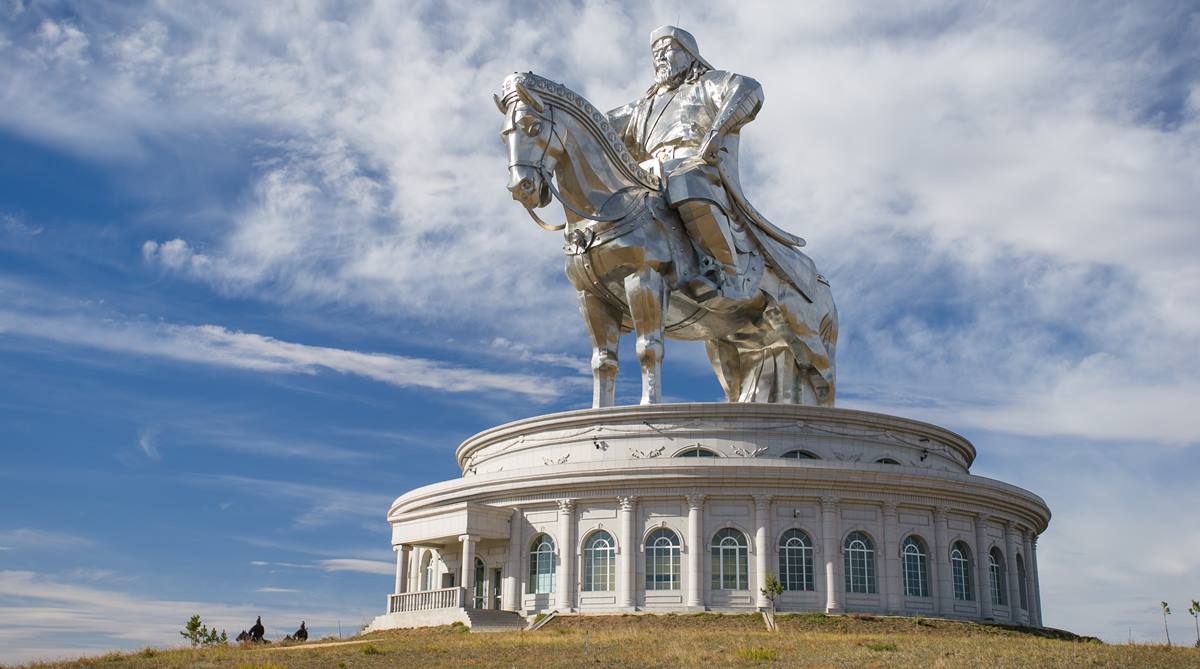WEATHER AND CLIMATE
A dry climate with short, mild summers and long, severe winters (November to February). In the depths of the winter (December and January), temperatures can remain below zero degrees for several weeks. Cold snaps can bring the temperature to minus 30°C. Spring (March-May) brings unsettled weather, strong winds and wild fluctuations in temperature. Summers (June-August) are warm across the country, particularly in the Gobi Desert where temperatures can reach 40°C. Thunderstorms are common in late summer. September and October are cool in the north but quite pleasant in Gobi areas. July and August are generally the best months for travel.
Advertisement
SECULAR CELEBRATIONS
Major public holidays are New Year’s Day (1 January); Lunar New Year or Tsagaan Car, meaning “White Month”, a three-day holiday with variable dates in late January to early February); Women’s Day (8 March); Naadam, anniversary of 1921 Mongolian Revolution (11-13 July); and Mongolian Republic Day (26 November).
FOOD AND DRINK
Meat is the basis of the diet, primarily mutton, with goat, horse, camel and yak meat dishes also on offer. Rice, flour, potatoes and onions are the other main ingredients while green vegetables are rarely encountered outside the Capital. The local cooking is quite distinctive. Traditional meals generally consist of boiled mutton with lots of fat and flour with either rice, pasta, noodles or dairy products. Specialities include Boodog, Khorkhog , Buuz (national food) and Khuushuur is another popular food item. Regional drinks Suutei tsai (salty tea with milk) is very popular. Mongolian vodka is excellent. Chinese and Korean beers are widely available.
INDIAN PRESENCE
The Indian community in Mongolia is small, numbering less than 200, according to Mongolian Immigration figures. Most Indians are either employed in organised sector or are self-employed such as operating Indian restaurants which are popular with the Mongolians and foreigners in Mongolia. There is a small number of Persons of Indian Origin (PIO).
AIR FLIGHTS
There are more than 160 weekly flights to Ulaanbaatar from New Delhi, although none are direct flights. Aeroflot, Asiana Airlines, China Southern Airlines, Korean Air, and Vistara are some of the top airlines flying this route.
COMMERCIAL RELATIONS
For Mongolians, India is one of counter-weights to their neighbours, a “spiritual neighbour”, a declared third neighbour and strategic partner and centre for pilgrimage.
In 1996, an Agreement on Trade and Economic Cooperation between India and Mongolia was signed. The Agreement provides for MFN (most-favoured nation) status to each other in respect of customs, duties and all other taxes on imports and exports. During the visit of President Bagabandi in 2001, both sides signed an Investment Promotion and Protection Agreement, which is currently under review. Bilateral trade is modest in value and volumes. From 2016 up to November 2017, there was total trade of US$34 million between the two countries.
Main items of exports to Mongolia include medicines, mining machinery and auto parts. Imports from Mongolia include raw cashmere wool. The BSF (MHA) of India and the Mongolian General Authority for Border Protection (GABP) have been closely cooperating on border patrolling and related subjects for over eight years. In defence corporation India is a regular participant in the multilateral exercise “Khan Quest” held in Mongolia. India also offers training to Mongolian Defence officers each year for capacity building. Mongolia has been traditionally supporting India in the United Nations and various other international forums. It has supported India for the non-permanent seat of the UN Security Council (UNSC) for 2011-2012.
VISA
Following documents are required: Passport (valid for at least six months from the date of application for the visa), Photocopy of the applicant’s passport (first and last page), Two visa form (photocopy allowed), Two recent passport-size photographs, A Covering letter (the purpose and duration of the visit. The letter should be addressed to the Visa Consular – Embassy of Mongolia), Confirmed onward/ return air ticket, Invitation letter from the Ministry of Mongolia (Business purpose), Proof of accommodation or hotel reservation and Bank statement of last three months. There is no Visa fees.
TOURIST ATTRACTIONS
Ulaanbaatar: The Capital, Ulaanbaatar, is more than a city. It is a fusion of tradition and modernity in the strictest sense, and though travellers do not usually come to Mongolia to experience its urban culture, they typically experience both that and a strong nomadic influence here. Glimpses of the country’s ancient and recent history can be viewed through day trips to the remnant monasteries, Soviet-style apartments and public buildings, modern glassy skyscrapers and the ger districts along with sites like the National Museum, Natural History Museum, Government House, and Zaisan Hill to name just few. A place like Narantuul Market, a covered market with stalls selling traditional Mongolian lifestyle needs, is one that no other city can offer.
The Orkhon Valley : The seat of many ancient states established on the territory of Mongolia, the Orkhon Valley Complex was recognized by UNESCO World Heritage as a cultural landscape in 2004. Old Turkish Orkhon inscriptions from the 8th century, the ancient 8-9th century Uighur capital of Khar Balgas, Tuvkhun Monastery established by the great Mongolian sculptor and politician Zanabazar in 1648, and the present Erdene Zuu Monastery are some of the highlights of a visit.
Tsagaan Suvarga (White Stupa): Located in Dundgovi Province, Tsagaan Suvarga ~ or the White Stupa ~ boasts towering buttress-like structures with clear exposures of limestone bedrock from ancient sea beds. These are definitely worth the visit. Other attractions include Uvur Hoshoot (Uushgiin Deer Stone Complex), Lake Hovsgol (Huvsgul), Altai Tavan Bogd(Harboring the highest peak Huiten in Bayan-Ulgii Province), Khorgo Terkhiin Tsagaan Nuur National Park, Gorkhi-Terelj National Park, Hustain Nuruu National Park, Bayanzag (The Flaming Cliffs) and Gobi Desert.
MONGOLIA FACTFILE
Capital: Ulaanbaatar
Currency: Mongolian tögrög
Ethnic group: Khalkh 81.9%, Kazak 3.8%, Dorvod 2.7%, Bayad 2.1%, Buryat-Bouriates 1.7%, Zakhchin 1.2%, Dariganga 1%, Uriankhai 1%, other 4.6% (2010
est.)
Languages: Mongolian 90% (official) (Khalkha dialect is predominant), Turkic, Russian (1999)
Religions: Buddhist 53%, Muslim 3%, Shamanist 2.9%, Christian 2.2%, other 0.4%, none 38.6% (2010 est.)









